
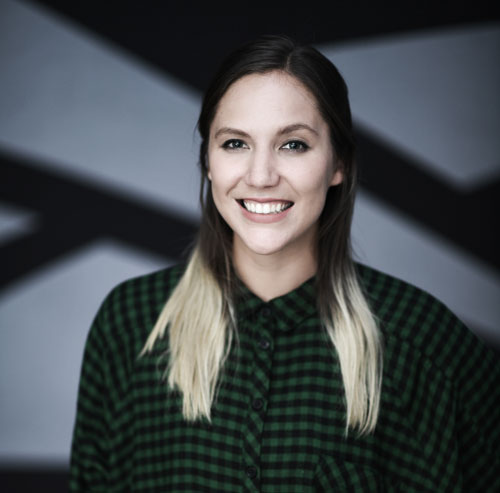 Today we have the pleasure of speaking with Michelle Briggs, a Senior Design Manager on the Creative Direction team at Reebok here in Boston, Massachusetts. As a Design Manager of Concept and Color at Reebok, Michelle is responsible for developing their Global Color Palette and seasonal color strategy. Michelle’s background in apparel design from the University of Cincinnati DAAP program and Master of Global Management from the Arizona State University Thunderbird program, has allowed her to merge her technical design skills with a global business leadership mindset. As a global design leader in the active industry, Michelle prioritizes in depth trend in consumer research, storytelling and sustainability when building the seasonal direction and developing the Global Palette.
Today we have the pleasure of speaking with Michelle Briggs, a Senior Design Manager on the Creative Direction team at Reebok here in Boston, Massachusetts. As a Design Manager of Concept and Color at Reebok, Michelle is responsible for developing their Global Color Palette and seasonal color strategy. Michelle’s background in apparel design from the University of Cincinnati DAAP program and Master of Global Management from the Arizona State University Thunderbird program, has allowed her to merge her technical design skills with a global business leadership mindset. As a global design leader in the active industry, Michelle prioritizes in depth trend in consumer research, storytelling and sustainability when building the seasonal direction and developing the Global Palette.
Tell us about yourself, your background and your role at Reebok.
Michelle Briggs: I’m originally from Columbus, Ohio, and I actually went to school at the University of Cincinnati, where I studied Apparel Design Product Development in UC’s DAAP program, which stands for Design, Architecture, Art, and Planning. And the Apparel Product Development, it was a program that essentially merged kind of traditional design education with a little bit of branded trend forecasting and business. But I think the real draw to DAAP was actually that it had this co-op program, which was a five year program that enabled students to alternate between academic semesters and then semesters of full-time work experience. So during my time at UC, I was actually fortunate enough to work for five different global companies, which was really a great way to kind of explore the industry, figure out a little bit more about what I wanted to do. And it’s really how I kind of stumbled upon color design, color and concept.
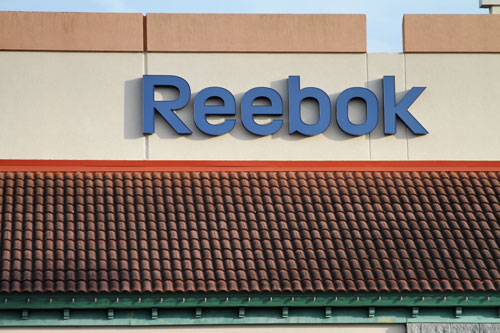 Michelle Briggs: I had no idea that that was even a potential career path for me. Obviously I had come from more of a traditional design background. So basically I started in kids wear with Ash Kash in New York City. And then from there, I went to Lands’ End in Wisconsin, which I’m not sure if you’re familiar with Lands’ End but they’re actually located in Dodgeville, which is this teeny tiny town outside of Madison. So like the transition of going from New York City, living with four girls in a one bedroom apartment, to living out in the country. I was actually on like a horse ranch living in the basement of this old couple’s home. No cell phone service. So I think, I mean, even that part of the program where you’re kind of going into these different parts of the country and learning just about the different cultures was really inspiring as well.
Michelle Briggs: I had no idea that that was even a potential career path for me. Obviously I had come from more of a traditional design background. So basically I started in kids wear with Ash Kash in New York City. And then from there, I went to Lands’ End in Wisconsin, which I’m not sure if you’re familiar with Lands’ End but they’re actually located in Dodgeville, which is this teeny tiny town outside of Madison. So like the transition of going from New York City, living with four girls in a one bedroom apartment, to living out in the country. I was actually on like a horse ranch living in the basement of this old couple’s home. No cell phone service. So I think, I mean, even that part of the program where you’re kind of going into these different parts of the country and learning just about the different cultures was really inspiring as well.
Michelle Briggs: But when I was at Lands’ End, I was hired for the kids team. And then when I got there, we actually found out that they had hired two people for the same role. So they were like, okay, we’re going to put you on this color and concept which I had no idea what that role was, what the team did, but I ended up enjoying the work so much that I kind of continued down that path and looking for roles in color and trend. So from there, I spent some time at LPK, which is a global design and innovation agency that works closely with a lot of different brands, most prominently P&G, and then spent some time at Fossil in Texas and then Limited Brands. So I kind of went from apparel design, dabbled in a little graphic design branding and then really focused on trend in color.
Steve Cunningham: That’s really great. And what was it about the trend in color that appealed to you so much? Because it sounds like it wasn’t necessarily on your radar first, but once you got into it, it was something you enjoyed. So there’s certain aspects about it that appealed to you.
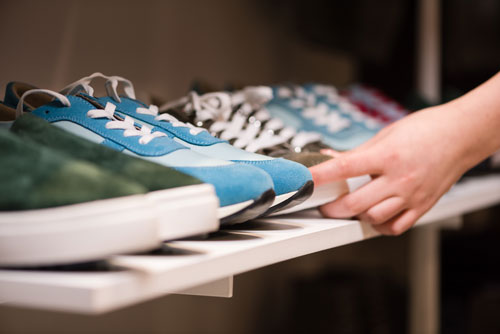 Michelle Briggs: I think the best part of working in color and probably why I’ve actually been at Reebok now for so long is that color is kind of half creative and half technical. So at Reebok, for example, we custom dye all of our own colors. So for those who might not be familiar with that, like Pantone is a really great example of a color system that a lot of brands use, but at Reebok, we are developing our own color library. So not only like when we’re working through color, are we creating like the strategy, the colors, the combos and the storytelling, but we also are responsible for developing the actual physical color standards. So that means working closely with our suppliers, testing color achievability on various fabrications, lab dips. I mean, timelines, budgets, it’s a lot of, you have to wear a lot of different hats.
Michelle Briggs: I think the best part of working in color and probably why I’ve actually been at Reebok now for so long is that color is kind of half creative and half technical. So at Reebok, for example, we custom dye all of our own colors. So for those who might not be familiar with that, like Pantone is a really great example of a color system that a lot of brands use, but at Reebok, we are developing our own color library. So not only like when we’re working through color, are we creating like the strategy, the colors, the combos and the storytelling, but we also are responsible for developing the actual physical color standards. So that means working closely with our suppliers, testing color achievability on various fabrications, lab dips. I mean, timelines, budgets, it’s a lot of, you have to wear a lot of different hats.
Steve Cunningham: For sure it sounds like it.
Michelle Briggs: Yeah. That’s dichotomy of like half design, half development, actually makes finding people for color really hard to because, no offense to design but creativity and strict processes and timelines don’t often go hand in hand and you really have to have a good mix of like the left and right side of your brain-…to kind of see the whole process.
Steve Cunningham: Let’s talk about Reebok a little bit.
What are some projects you’re working on right?
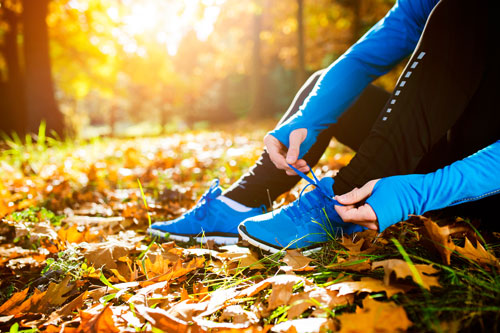 Michelle Briggs: Yeah, for sure. So now I’ve been just a little bit about Reebok who’ve been there now for a little over seven years and I started working more closely with the apparel side and then transitioned over to footwear. And now I’m a senior manager over the concept in color team. So we’re really responsible for creating the global color palette and the seasonal strategy. But again, I think talking about how it’s really great to have access to both the kind of creative and technical side of the process. It’s, I think learning about various dying techniques and processes has been a really great way for us to start to implement more sustainable methods into our strategy and our palette. So I guess just a quick background, a lot of my team members came from a design background without a lot of knowledge of the color process.
Michelle Briggs: Yeah, for sure. So now I’ve been just a little bit about Reebok who’ve been there now for a little over seven years and I started working more closely with the apparel side and then transitioned over to footwear. And now I’m a senior manager over the concept in color team. So we’re really responsible for creating the global color palette and the seasonal strategy. But again, I think talking about how it’s really great to have access to both the kind of creative and technical side of the process. It’s, I think learning about various dying techniques and processes has been a really great way for us to start to implement more sustainable methods into our strategy and our palette. So I guess just a quick background, a lot of my team members came from a design background without a lot of knowledge of the color process.
Michelle Briggs: Over the years we’ve been able to kind of develop a more robust knowledge of production, dying capabilities and what’s kind of available right now in the industry. And so we’ve been really focused on implementing some sustainable color initiatives for the brand. And I think one of the more recent successes that we’ve had was, we’ve been able to launch kind of this range of non-dye and natural dye products for Reebok. So right now we’re currently building our seasonal palette for Fall-Winter 23, and we’re working towards implementing more of these initiatives into our color strategy for future seasons.
Steve Cunningham: That’s great. And sustainability is obviously on top of everyone’s mind, have there been challenges within that transition? The non-dye, the natural dye seemed like great steps in the right direction.
What are some of the challenges you’ve experienced in transitioning to sustainable color initiatives?
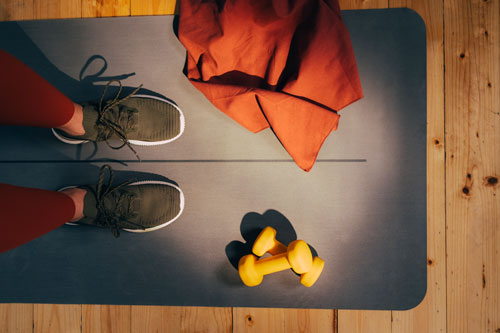 Michelle Briggs: One of the unique challenges that we actually face a lot with our sustainable color initiatives is that we build a lot more tolerance for color variability, which actually goes against everything we’ve kind of been working towards in the industry because we’ve been still focused on the standardization of color. So for example, with natural dye, there’s a lot of color variance. So it’s hard achieve kind of the same color across various production lots and so we have to work really closely with our suppliers to kind of create a window of acceptable shades. The process can be really complex and difficult to communicate with our suppliers. So I think besides cost, obviously being a really big challenge, the complexity of sustainable initiatives also becomes a big barrier to implement these initiatives for sustainability.
Michelle Briggs: One of the unique challenges that we actually face a lot with our sustainable color initiatives is that we build a lot more tolerance for color variability, which actually goes against everything we’ve kind of been working towards in the industry because we’ve been still focused on the standardization of color. So for example, with natural dye, there’s a lot of color variance. So it’s hard achieve kind of the same color across various production lots and so we have to work really closely with our suppliers to kind of create a window of acceptable shades. The process can be really complex and difficult to communicate with our suppliers. So I think besides cost, obviously being a really big challenge, the complexity of sustainable initiatives also becomes a big barrier to implement these initiatives for sustainability.
Steve Cunningham: Absolutely. But it’s something that you guys are overcoming and it’s something that the company’s committed to and working towards. And I think all different companies have their initiatives and we all have to contribute to it, and it’s the consumers want it. It’s good for all of us at a corporate level to have that same initiative that not only reflects what the consumer wants but really what’s best for the industry as a whole because I don’t think it’s any secret that the apparel industry is not necessarily or the textile industry is not necessarily looked at as sustainable but I think there’s been great strides towards that and a big commitment towards doing it. Can you tell us a little bit more and some of this is from my own knowledge, but a little bit more about that dying process and how it works and the development that you have factors into that in any way.
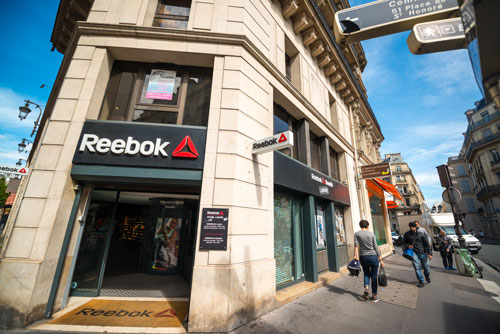 Michelle Briggs: Yeah. So kind of a quick overview of that, the process of applying color to textile is actually kind of a real complex network of processes because it depends on obviously the fiber type, the fabric construction, any previously applied chemistry, color properties, and then what you want the final look and feel of the fabric to be. So all of these aspects really influence the process and the steps in the chemistry that’s applied, but in a very simplified way, the process of applying colors to textiles can be broken down into three steps. So you basically have the pretreatment, the coloring process itself, and then a post-treatment. The pretreatment is really just like the preparation of the fabric for coloring. So it’s removing chemicals, heat setting, et cetera. And then the coloring process is where you’re actually applying the color.
Michelle Briggs: Yeah. So kind of a quick overview of that, the process of applying color to textile is actually kind of a real complex network of processes because it depends on obviously the fiber type, the fabric construction, any previously applied chemistry, color properties, and then what you want the final look and feel of the fabric to be. So all of these aspects really influence the process and the steps in the chemistry that’s applied, but in a very simplified way, the process of applying colors to textiles can be broken down into three steps. So you basically have the pretreatment, the coloring process itself, and then a post-treatment. The pretreatment is really just like the preparation of the fabric for coloring. So it’s removing chemicals, heat setting, et cetera. And then the coloring process is where you’re actually applying the color.
Michelle Briggs: It could be dying, even printing in some cases, and then the after treatment is what is fixing the color to the material. And so I think what’s actually really surprising about that is 80% of the water used in the fabric coloration is actually driven by the pretreatment and after treatment processes and less by the color application stuff itself. So I think a lot of people would think that just looking at the dying part of the process is where you’re going to save on using less water chemicals and energy but you really need to look at kind of whole, the holistic process and see like, is this step necessary? Where can we eliminate and how can we actually make this process a little bit more sustainable and save on the chemicals and the water and the energy that we’re using?
Steve Cunningham: Well, that’s really interesting. And so how do you balance all that? So there’s kind of two ends to it. There’s the creative and development side, and then there’s the execution in kind of making sure that the quality and that you’re hitting the sustainability metrics that you’re looking for.
How do you find the balance between trying to be creative and innovative and also making sure that you’re hitting on the sustainability side as well?
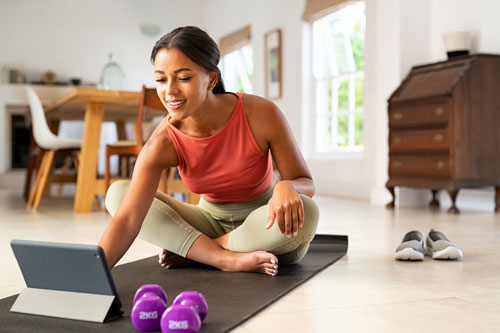 Michelle Briggs: I think that’s really the challenge. I think it’s tough to kind of make sure that you’re keeping that creativity but also following through on the technical things. So I think the challenge with sustainability, especially when it comes to color, non-dye and natural dye are really great examples of some sustainable initiatives but they’re really limiting in terms of the colors and quality that you can achieve. So for example, non-dye, you’re not getting any options in terms of color. You’re really only getting this off white, no- undyed execution.
Michelle Briggs: I think that’s really the challenge. I think it’s tough to kind of make sure that you’re keeping that creativity but also following through on the technical things. So I think the challenge with sustainability, especially when it comes to color, non-dye and natural dye are really great examples of some sustainable initiatives but they’re really limiting in terms of the colors and quality that you can achieve. So for example, non-dye, you’re not getting any options in terms of color. You’re really only getting this off white, no- undyed execution.
Michelle Briggs: And then the color range for natural dye is also super limited because you’re actually using pigments found in nature. You can’t really achieve dark colors. You can’t achieve very bright colors, which of course are really important in the active industry to have those like neons and the brights. So the colors that you’re getting are very beautiful but they’re really washed down versions of the colors that you’re hoping to achieve. So there are some other sustainable color initiatives that we’ve been investigating that don’t limit color or quality. Dope dye is actually a really great example of a dye technique where color is added to the fabric during the fiber extrusion stage, which basically is reducing a lot of those stages in the conventional dying process.
 Michelle Briggs: And so with dope dye, you can still achieve a wide variety of colors. You can have darks, you can achieve neons, and you’re not compromising on color. And I think that’s the goal. Like that’s where we want to be. We want to get to the point where we can be sustainable but also have achieve the outlook, the desired outlook that we want and not be so limited. But I think the big thing right now with dope dye too is, one big challenge is cost. So it’s tough to implement. So again, the cost, it’s expensive and also it’s complex, so you have to change the way that you’re dying and the suppliers that you’re working with and just really communicate across the whole supply chain.
Michelle Briggs: And so with dope dye, you can still achieve a wide variety of colors. You can have darks, you can achieve neons, and you’re not compromising on color. And I think that’s the goal. Like that’s where we want to be. We want to get to the point where we can be sustainable but also have achieve the outlook, the desired outlook that we want and not be so limited. But I think the big thing right now with dope dye too is, one big challenge is cost. So it’s tough to implement. So again, the cost, it’s expensive and also it’s complex, so you have to change the way that you’re dying and the suppliers that you’re working with and just really communicate across the whole supply chain.
Steve Cunningham: Yeah. And I think that’s what we see with sustainability as a whole, whether it’s moving to different fabrics, in some cases you’re talking specifically about dye and dye processes, but some of it is cost prohibitive at the moment and some of it will scale to something more reasonable, and eventually as there’s more demand for it and more initiatives like this, like yours behind it, that that scaling will happen. And some of it is just going to be a more expensive process or a more expensive material or all that. And so that becomes a more economical balancing act.
What can you absorb and what is the consumer willing to absorb for a more sustainable product?
Michelle Briggs: Right. Yeah. So dependent on if the consumer is willing to pay more for that. And I think that’s kind of the push that the industry needs.
Steve Cunningham: Absolutely.
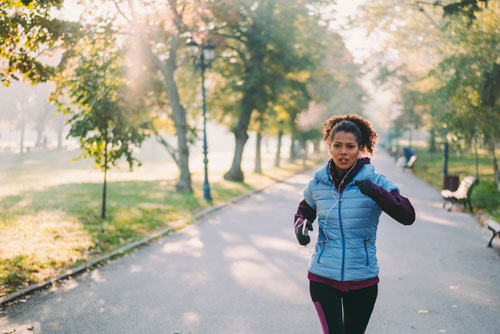 Michelle Briggs: And I think, the other thing that I’ll just mention too, just because we’re talking more about color but I think also when you’re looking at sustainability across products in general, obviously like materials play a big role in that as well. And so at Reebok, we’ve actually been focused on our biggest sustainability initiatives are recycled and regrow. So recycled is focusing on reducing plastic waste. So we’re using materials that are made from recycled plastic bottles, using recycled poly instead of virgin poly. And then regrow is focusing on products made from things that grow. So we’ve been using castor bean oil, loom algae, eucalyptus, natural rubber, and we’ve been able to make a lot of progress in this space. And some of our footwear is over 50% plant-based materials and we’re really aiming to get to 100% of our product being sustainable by 2030.
Michelle Briggs: And I think, the other thing that I’ll just mention too, just because we’re talking more about color but I think also when you’re looking at sustainability across products in general, obviously like materials play a big role in that as well. And so at Reebok, we’ve actually been focused on our biggest sustainability initiatives are recycled and regrow. So recycled is focusing on reducing plastic waste. So we’re using materials that are made from recycled plastic bottles, using recycled poly instead of virgin poly. And then regrow is focusing on products made from things that grow. So we’ve been using castor bean oil, loom algae, eucalyptus, natural rubber, and we’ve been able to make a lot of progress in this space. And some of our footwear is over 50% plant-based materials and we’re really aiming to get to 100% of our product being sustainable by 2030.
Steve Cunningham: Oh, that’s excellent.
Michelle Briggs: But I think where we find challenges is the materials have to hold up to our rigorous testing standards. So you’re thinking about an active brand, consumers are putting a lot of stress on these products, whether they’re running other physical activities, they’re sweating for apparel, they’re washing at very high volumes and a lot of times these bio-based materials aren’t quite where they need to be yet in order to hold up to these conditions. So there’s still a lot of innovation in these bio-based materials and make them kind of hold up to the testing standards that we need them to.
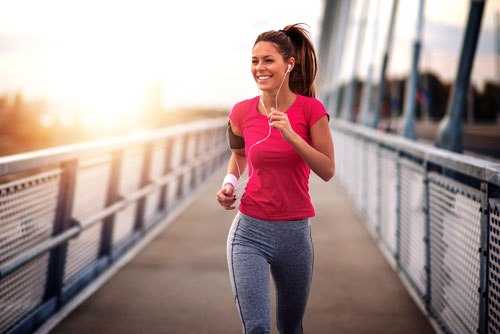 Steve Cunningham: Yeah. That’s also part of the balancing act, I think for retailers and brands is, okay, as we move towards different solutions that are better for the product and the environment and the consumer, are we willing to sacrifice a little bit of performance? I mean, we’re in finishes. So DWR is a great example. So C6 Technologies moving to PFC-free, much more sustainable product, better for the environment, but you lose a lot of performance. And so it’s interesting to see how different brands adjust that because everyone obviously wants to maintain the same standard of performance. And that’s what the consumer is used to, and that’s what they expect, but they also want more sustainability now. So it’s this balance between the two things and that’s a huge challenge, I think for a lot of people in the industry.
Steve Cunningham: Yeah. That’s also part of the balancing act, I think for retailers and brands is, okay, as we move towards different solutions that are better for the product and the environment and the consumer, are we willing to sacrifice a little bit of performance? I mean, we’re in finishes. So DWR is a great example. So C6 Technologies moving to PFC-free, much more sustainable product, better for the environment, but you lose a lot of performance. And so it’s interesting to see how different brands adjust that because everyone obviously wants to maintain the same standard of performance. And that’s what the consumer is used to, and that’s what they expect, but they also want more sustainability now. So it’s this balance between the two things and that’s a huge challenge, I think for a lot of people in the industry.
Michelle Briggs: Yeah, for sure. I think also the consumer just has a lot of power and I think eco-friendly initiatives are very slow and they’re complex to implement. So they demand a lot of financial material resources. And if consumers really are going to need to demand these products from brands in order for companies to pursue and invest in these changes.
Steve Cunningham: Absolutely. Let’s dive into the consumer a little bit more.
What features are you seeing that the consumers are increasingly desiring in your product category?
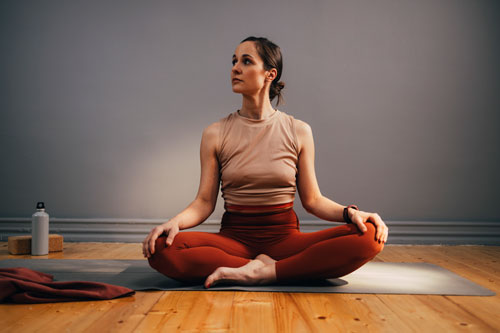 Michelle Briggs: We’ve talked a lot about sustainability, and I think just to kind of round that one out, not only are we seeing a lot of innovative, new dying techniques in terms of color, but we’re also seeing kind of an increase of a desire for quality products which, especially in the active industry but I think across a lot of industries you’re looking at kind of this increased desire for wearable versatile products, things that are really built and made to last. We’ve actually had a couple consumer insight sessions where we were talking to consumers. And it’s funny when you chat with them about sustainability and you ask them, what does it mean to them? And in my mind, when I think about sustainability, I’m thinking about, okay, is it eco-friendly materials? Is it eco-friendly processes?
Michelle Briggs: We’ve talked a lot about sustainability, and I think just to kind of round that one out, not only are we seeing a lot of innovative, new dying techniques in terms of color, but we’re also seeing kind of an increase of a desire for quality products which, especially in the active industry but I think across a lot of industries you’re looking at kind of this increased desire for wearable versatile products, things that are really built and made to last. We’ve actually had a couple consumer insight sessions where we were talking to consumers. And it’s funny when you chat with them about sustainability and you ask them, what does it mean to them? And in my mind, when I think about sustainability, I’m thinking about, okay, is it eco-friendly materials? Is it eco-friendly processes?
Michelle Briggs: But when they think about it, they’re often thinking about products that are going to last them a really a long time. So quality. So it’s about buying less, but buying like fewer better products. So that’s been a big focus for us is how do we focus on quality and that is everything from the materials that we’re using but also colors that are going to be very wearable and last for a while then not focusing on the next trend or the new hype colorway or material and focusing on kind of those classic silhouettes and classic details that are going to carry on and pass down for a while. On top of that, outdoor has been a big influence on our markets. So I think during the pandemic, a lot of people used their times to either pick up new outdoor activities or they wanted to kind of escape their house and get outside.
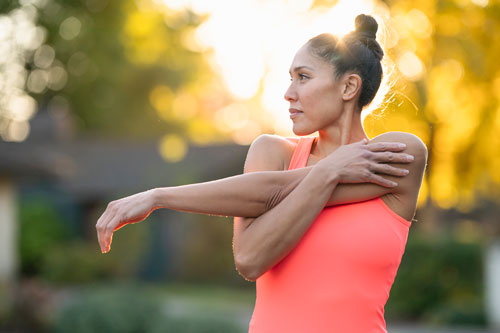 Michelle Briggs: And so that’s really influenced the look and functionality of products. So in terms of color, we’ve seen kind of this increase in natural and outdoor inspired colors and then materials, things that are more durable, functional, outsoles, and I think outdoor and sustainability have both kind of been a really big driver of the look and functionality for us. The other two things that we’ve really been seeing as well is the influence of nostalgia. So the past two years have been difficult and full of uncertainty for a lot of people. And in times of crisis, we often see people gravitate towards things that feel familiar, and nostalgia can be kind of this grounding presence and offer a sense of peace. And so we’re kind of seeing this influence storytelling and color in a big way. So for example, 70s inspired colors like browns, warm golds are starting to make a comeback, collegiate primaries from the 90s and the early 2000s.
Michelle Briggs: And so that’s really influenced the look and functionality of products. So in terms of color, we’ve seen kind of this increase in natural and outdoor inspired colors and then materials, things that are more durable, functional, outsoles, and I think outdoor and sustainability have both kind of been a really big driver of the look and functionality for us. The other two things that we’ve really been seeing as well is the influence of nostalgia. So the past two years have been difficult and full of uncertainty for a lot of people. And in times of crisis, we often see people gravitate towards things that feel familiar, and nostalgia can be kind of this grounding presence and offer a sense of peace. And so we’re kind of seeing this influence storytelling and color in a big way. So for example, 70s inspired colors like browns, warm golds are starting to make a comeback, collegiate primaries from the 90s and the early 2000s.
Michelle Briggs: And I think it also just has to do with the rise of vintage and shopping secondhand as well. So as the consumers are like mixing these pieces into their wardrobe, it’s also starting to influence the look of new products. What’s been great is we have such a great history in the sportswear industry that we’ve been able to go back to our archive and look to some of these eras for design and storytelling inspiration, got a great range of heritage products, especially in women’s aerobics and basketball. And so bringing in of those nostalgic references has been a real success for us.
Steve Cunningham: That’s so fascinating. Because I guess I never really noticed it but obviously the trend of everyone kind of going outdoors. I remember during the pandemic, I was like, okay, well, maybe I should get back into camping, which I think I saw a lot of people doing. I’m like, I have young kids. That sounds good. And it was tough to even find a campsite which I don’t think I’ve ever heard of, but I never really realized the impact it had on how brands would design. And maybe you guys were a little ahead of the curve on it. It seems like you were very proactive in identifying these trends in implementing them.
Steve Cunningham: Just taking the information you’re getting from consumers and trends and bringing them into your design meetings and executing on them. It seems like you had to do it pretty quickly and probably not in the normal fashion that you’re used to doing it because maybe I assume everyone was remote or at least part-time in and out of the office. So maybe we talk a little bit about that.
What were some of the challenges that you faced during the pandemic and how did you overcome them?
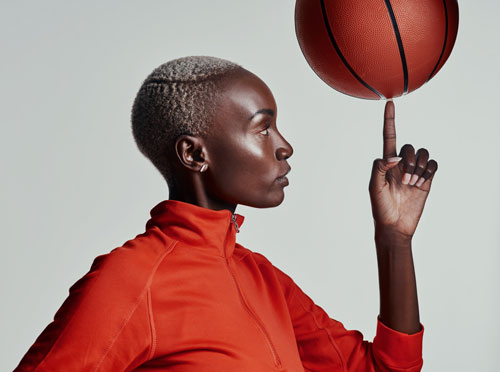 Michelle Briggs: Yeah, yeah. I mean, that’s been obviously a big challenge for us. I think just thinking about what you were saying as far as getting on top of the trends and interacting with consumers, like that’s been one big challenge for us is, we haven’t been able to travel and for our team, that’s where we got a lot of our information, whether it was kind of going out to the market and seeing what was happening or going to different places and experiencing the culture, talking to our consumer. So, I mean, beyond that, I think that was hard for us as a creative team to not have inspiration. And one of the things that we actually did which was kind of interesting is, I really challenged our team to look at how can we find inspiration to, and just our everyday environment.
Michelle Briggs: Yeah, yeah. I mean, that’s been obviously a big challenge for us. I think just thinking about what you were saying as far as getting on top of the trends and interacting with consumers, like that’s been one big challenge for us is, we haven’t been able to travel and for our team, that’s where we got a lot of our information, whether it was kind of going out to the market and seeing what was happening or going to different places and experiencing the culture, talking to our consumer. So, I mean, beyond that, I think that was hard for us as a creative team to not have inspiration. And one of the things that we actually did which was kind of interesting is, I really challenged our team to look at how can we find inspiration to, and just our everyday environment.
Michelle Briggs: And to your point of talking about getting outside, like we were kind of almost forced to get inspiration from nature as well, which I think also plays into a little bit of how we’ve been seeing these like outdoor and natural inspired themes kind of make their way into product. And I think that also had something to do with it. So that was one big thing is, is just how are we getting inspiration? But I think the real challenge came to how are we going to work, right? Because we are always referencing physical color standards, materials, products. And so without having access to that, it becomes very difficult. So I was actually out of the office traveling the week that we shut down. So I wasn’t able to like, grab anything, bring anything home with me. Luckily my team was able to grab a handful of things that we needed to kind of continue some of the projects that we had worked on, but we reference our library of tools and samples every day.
Michelle Briggs: So we really had to problem solve around that. The first big challenge that we were met with was we had a final color review about like the week after we had shut down, which I think out of all of the reviews is probably the most important to have in person because you’re referencing color. And color is never 100% accurate on screen. So what I might be looking at on my screen could be completely different than what someone else is seeing on their screen because, unless you’re calibrating everyone’s screens, it’s likely not going to be accurate or the same.
Steve Cunningham: Interesting.
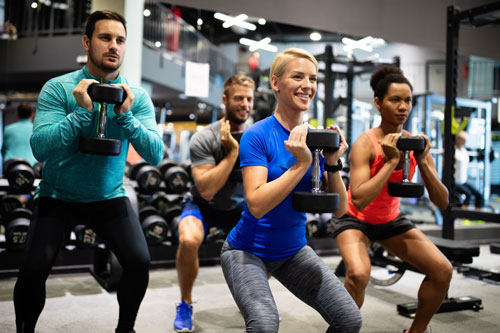 Michelle Briggs: And then a lot of times, like bright colors aren’t achievable and CMYK or RGB color spaces. So at any point if you have design or product marketing, taking a file and it’s not in the right settings, it can all of a sudden appear really different. So we actually found ourselves in a lot of situations where the team thought they were creating a product that was one color, and then when they got the sample in, it was much different than they were expecting. And that either just was them not having access to the physical colors or not viewing them in the right setting.
Michelle Briggs: And then a lot of times, like bright colors aren’t achievable and CMYK or RGB color spaces. So at any point if you have design or product marketing, taking a file and it’s not in the right settings, it can all of a sudden appear really different. So we actually found ourselves in a lot of situations where the team thought they were creating a product that was one color, and then when they got the sample in, it was much different than they were expecting. And that either just was them not having access to the physical colors or not viewing them in the right setting.
Steve Cunningham: Did that make some of those processes and reviews longer? Did you have to start to allocate more time towards these meetings and processes just to make sure that everything was covered and accurate?
Michelle Briggs: For sure. Yeah. So we were like rigging up cameras where we were trying to have everyone with a visual of what we were looking at. We also spent a lot of time taking photos and sending them to people or Photoshopping things. And so our day to day tasks just became a lot more complex. I will say though, one kind of positive that came out of it was, it seemed like there was a lot more trust across the board where you really had to trust every team to be the expert because likely, they were the only one that had the sample at their house.
Michelle Briggs: They had to make the call because this person didn’t have access to the office. So they weren’t able to have a meeting where you have so many people trying to weigh in on decisions and you’re really boiling it down to the trust in every team to make the call rather than having things move so slow in that way. So I think even though it did kind of slow up some things, it also sped up in other ways where we didn’t have to get sign off across so many different categories just because it wasn’t possible.
Steve Cunningham: Yeah. Different level of collaboration for sure. Wow.
Michelle Briggs: Yeah, it was very interesting.
Your job clearly hinges on making sure that colors on the fabrics are exactly right. Can you tell us a little bit about some of your personal challenges?
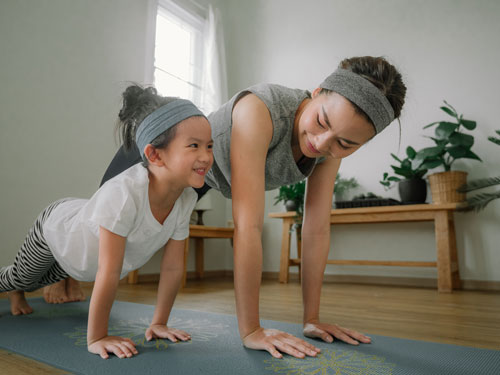 Michelle Briggs: One of the most interesting things also during the pandemic, when we were actually building our seasonal palette, so not only like, was our team not together to look at these colors, we all kind of had to recreate this palette in our own homes so that we could know what we’re talking about and have conversations. And for me, the color or the lighting in my apartment was so bad. Like I have yellow walls, my lights were very yellow, and then of course in Boston, it gets dark at like 4:00. And it was March when this kind of started. So I couldn’t even look at color past three something in the afternoon. So I would either have to work in a very short window of time or there was often a lot of times where I would like pin colors up on a board and take it outside and work outside for a while just because the lighting in my place was so bad.
Michelle Briggs: One of the most interesting things also during the pandemic, when we were actually building our seasonal palette, so not only like, was our team not together to look at these colors, we all kind of had to recreate this palette in our own homes so that we could know what we’re talking about and have conversations. And for me, the color or the lighting in my apartment was so bad. Like I have yellow walls, my lights were very yellow, and then of course in Boston, it gets dark at like 4:00. And it was March when this kind of started. So I couldn’t even look at color past three something in the afternoon. So I would either have to work in a very short window of time or there was often a lot of times where I would like pin colors up on a board and take it outside and work outside for a while just because the lighting in my place was so bad.
Steve Cunningham: Wow.
Michelle Briggs: And then it was wild. And my actual coworker, our color development specialist, so she handles our color lab dips. So for her, having accurate lighting is so important because she needs to make sure that all the colors are matching on different fabrications. So she checks it in natural light, store light, and she’s making comments, all of these normally at our office in the light box. And of course, we didn’t have access to that. So she ended up building her own light box in her apartment out of cardboard boxes. It’s just things that you don’t think about needing and then all of a sudden we’re trying to make these like makeshift light sources and kind of rigging things up. So we got very crafty, I’ll say during this.
Steve Cunningham: The adaptability is impressive. I mean, there’s two sides of it, just how creative you guys got and adapting. And then the other side as a consumer, it’s just not even fully realizing the amount of steps that had to go into, they go into the process in general like when things are normal. But then the pandemic, you talk about what you just said, having to take stuff outside or only be able to look at it during these times. I mean, that’s just stuff that I don’t think people could ever imagine when they’re purchasing something at the point of sale. And so it’s really fascinating to me to hear that and I appreciate you sharing because I think it’s pretty interesting.
Michelle Briggs: Yeah. We’ve been actually joking that we think the consumers are going to start seeing products like on the shelves where it’s like all these colors are like all mixed matched or like things are looking a little weird or things that like, they’re not going to realize that there was a team of people who like, either these things weren’t being reviewed with a group of people or things kind of just like fell through the cracks. And I think we just had to all do the best we could to work with what we had.
Michelle Briggs: I mean, there was a point where I drove to our office when I finally did get access and I packed up my car full of our whole entire library of color. And so not only our library, but all the other reference libraries we have. So I packed my car full of everything we had in the office and I took it back to my apartment and just kind of like stacked it in the hallway. And so it was a mess, but I think it was a struggle to be able to reference all the things that you need to on a daily basis to make sure that you’re meeting the standards that we’re used to.
Steve Cunningham: Wow. The length that you guys had to go to be able to keep that stuff going. That’s really impressive. So those are some of the challenges that have happened during the pandemic which we all in each of the businesses have certain challenge, but for footwear and maybe apparel in general, what has changed for the better do you think, maybe it’s processes or maybe it’s product design or whatever it may be, but what do you think has had a more positive influence after the pandemic?
What do you think the pandemic has changed for the better?
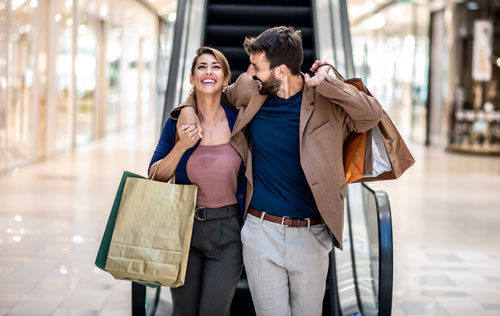 Michelle Briggs: I think we’ve seen more of this decrease in fast fashion. I think there’s a little bit more of an appreciation for product and what the consumer is willing to spend their money on. And then they, I think they want something, we talked about quality, we talked about sustainability, kind of this anti hype. So we see some brands starting to market themes of like slow fashion, the sportswear industry has been notoriously known for operating in kind of this hype space or streetwear even more so. But we’re seeing a little bit more of a backlash to that. So consumers are starting to buy fewer better products.
Michelle Briggs: I think we’ve seen more of this decrease in fast fashion. I think there’s a little bit more of an appreciation for product and what the consumer is willing to spend their money on. And then they, I think they want something, we talked about quality, we talked about sustainability, kind of this anti hype. So we see some brands starting to market themes of like slow fashion, the sportswear industry has been notoriously known for operating in kind of this hype space or streetwear even more so. But we’re seeing a little bit more of a backlash to that. So consumers are starting to buy fewer better products.
Michelle Briggs: And then I think also, kind of in tandem with this, the rise of like resale and shopping secondhand is another big change. I think, Gen Z has really kind of kicked this into high deal where they’ve been going to thrift shops and vintage shops and kind of mixing more of that into their wardrobe or even shopping their parents’ closet. I feel like back in the day, a lot of people were not so interested in and wearing their parents’ clothes, but all of a sudden now it’s like a cool thing to do. And so they’re kind of mixing in all these different eras, mixing in old pieces, new pieces, and then they’re really good at thrifting and kind of the hunt for this.
Michelle Briggs: And I think that’s where we’re going to see a lot of brands have to become even and more innovative with their operating models. For example, I know IKEA started offering like this buyback program where they resell secondhand furniture. There’s been some brands where they’re focusing on like, how do we repair existing products? But I think like the industry is going to have to start addressing these changes I think, if they want to keep up with the consumer, because they’re less looking to just buy the new next thing, they want to make sure they’re buying something that is in line with their values or it’s going to be good for the environment or something that they can even pass down through generations or resell after they’re done.
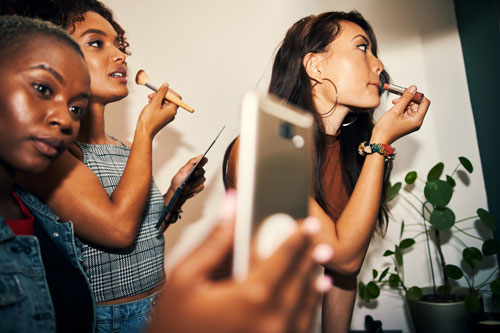 Steve Cunningham: It’s interesting that you say that because those are some of the trends that we started to see and in our business with the antimicrobial and the anti-odor and, we recently came up with anti-pilling technology. We realized that while the story kind of fits for the trend right now that these technologies are highly durable and they allow the consumer to kind of keep the garments longer, as long as there’s no other issues with it. But in terms of order control and protection against pilling, all those quality aspects and the experience that the consumer has, we’re helping brands at least deliver from those angles from a functional finish standpoint. And so we’ve seen a pretty good uptick during this time and I think it relates exactly to that trend that you just said. So it’s an interesting point.
Steve Cunningham: It’s interesting that you say that because those are some of the trends that we started to see and in our business with the antimicrobial and the anti-odor and, we recently came up with anti-pilling technology. We realized that while the story kind of fits for the trend right now that these technologies are highly durable and they allow the consumer to kind of keep the garments longer, as long as there’s no other issues with it. But in terms of order control and protection against pilling, all those quality aspects and the experience that the consumer has, we’re helping brands at least deliver from those angles from a functional finish standpoint. And so we’ve seen a pretty good uptick during this time and I think it relates exactly to that trend that you just said. So it’s an interesting point.
Michelle Briggs: Yeah. I think people are wanting to invest in that quality, something that’s going to perform and that’s going to last.
Steve Cunningham: Absolutely. Well, you’ve given me a ton of insight and I can tell that you’re very passionate about what you do and it’s been a great discussion.
Is there anything else that you’d like to share that you think would be helpful to our listeners?
Michelle Briggs: Yeah. The one thing that I think is really important for everyone in the industry is that I think it’s vital for brands to start working together. I think, especially in terms of sustainability, I know that, I mean, obviously that’s something I’m very passionate about and we’ve been focused on, I think for the industry to really make these changes, there needs to be cross industry collaboration in order to help achieve these goals faster. We’ve been really lucky to collaborate with some of our colleagues at Adidas and partner or with other brands, like all brands to discuss these topics. The only way we’re going to be able to transform the industry is if we all work together and collaborate because, I think again, like we talked about these initiatives, these eco-friendly initiatives are very slow and they’re complex and they’re costly. And I think if we can partner together, that’s really what’s going to make the difference. And I think, consumers demanding more of that from these brands.
Steve Cunningham: I love that message because I think it’s a highly competitive industry for brands and retailers. And it’s easy to get caught up in that. But like you said, for something like sustainability and doing the right thing in the long term, it’s going to require a lot of collaboration. So it sounds like you guys have already started to do that where you can and I think that’s an excellent message that hopefully other brands will also follow.
Michelle Briggs: Yes. Reaching across the aisle, even if it means collaborating with your competitors, I think that’s what going to take to get it done.
